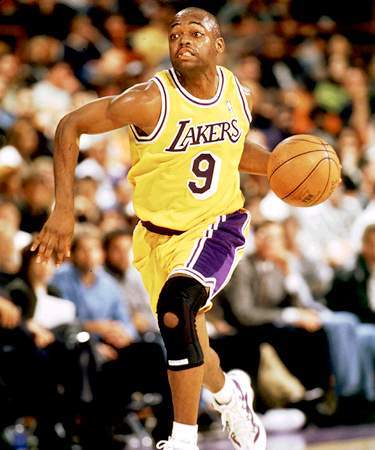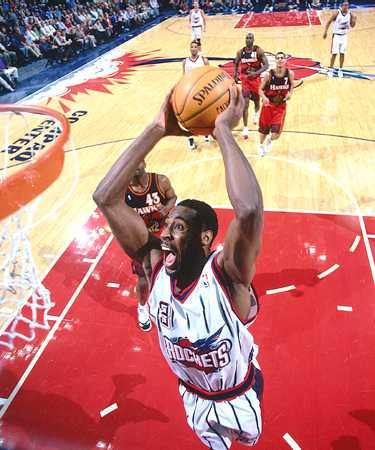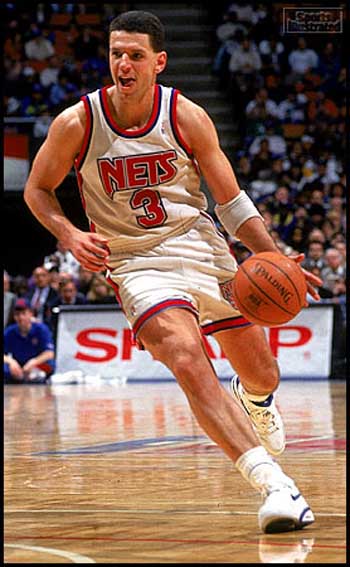With the NBA getting its draft on in the Big Apple tonight, most basketball fans will tune in to see the glitz and glamour of David Stern’s version of the Price is Right, with young men, some fresh outta’ their freshman seasons, making their services available for millions.
Everyone knows pretty much that the top tier, lottery picks turn out to be pretty decent pros (in my mind, Kwame Brown never happened). But it’s the second round picks that’ll really surprise you.
Gilbert Arenas, Rashard Lewis, Manu Ginobili, the list goes on, are guys who were overlooked in the draft only to make teams pay for it later. One Nick Van Exel from Kenosha, Wisconsin was one of the leaders of that trend.
Coming out of Bob Huggins’ system with the Cincinnati Bearcats, Nick was eased into leadership status, not really starting until his senior year. But it was then that Van Exel excelled (I know, I’m bad), taking his team to the big dance and in the process, putting Cincy college ball on the map. He was an Iverson-sized point guard with Ohio sized confidence when it came to shooting the three ball, and he had the shattered Cincy records to show for it.
In the 1993 Draft, Big Daddy Stern called Nick’s name from the podium and he was off to Tinseltown. But things weren’t all golden in Los Angeles at the time, with the “Showtime” era having just concluded; the Lakers were in a “rebuilding” phase. (Back then; you’d NEVER think to hear “Lakers” and “rebuilding” in the same breath). Magic, and Worthy were gone. Pat Riley was replaced with Randy Pfund (a Pat Riley look-alike) until borrowing Milwaukee’s old coach, Dell Harris. L.A. was banking on Nick and second-year man Eddie Jones to carry the Lakers into the future, and they brought the team back to the playoffs in 1995. Nick also helped close down Boston Garden, nailing a three at the buzzer to give the Lakers a late season road win.
The Lakers were officially Nick and Eddie’s team, that is until a large present from Orlando was dropped in Jerry Buss’ lap, in the form of newly signed Shaquille O’Neal. Add that with another young punk (Kobe) that the Lakers gave up center Vlade Divac for and there was some smoke in the City of Angels.
Van Exel had a reputation of being a hot head as well. After beefing with Dell Harris, Kobe, Shaq, Chick Hearn, Magic (remember when he came back and faked Sprewell out of his shoes?) some refs and the guy in the front row, Nick was shipped to the Denver Nuggets for peanuts (Tony Battie and Tyronn Lue).
In the Mile High city, Nick was the lone star on a team that couldn’t buy a win. Nick slugged it out for four years in Denver until getting shipped to Mark Cuban’s Billionaire Boys Club in Dallas. With the Mavericks, Nick played an off-the-bench role that was crucial to the revival of the Mavs as a legitimate NBA team, with the Mavs going back to the playoffs for the first time since Magic, Kareem and Worthy.
Nick was a victim of Mark Cuban’s meddling, and was sent to Golden State for Antawn Jamison and cap room, and in Oakland, he floundered playing in only 39 games. The weak showing towards the end of his career made him constant trade bait, being sent to Portland, with disastrous results once again.
After being waived by the Blazers, Nick’s last crack at a ring came calling, with the San Antonio Spurs calling for his services. In an almost tragic twist of fate and irony, the Spurs made is to the conference semis before bowing out in game seven in San Antone to the Mavs, the very team Nick helped put back on the basketball map. He announced his career was over shortly thereafter.
One thing about Nick, despite his Donald Duck temper, was his clutch shooting ability. Like a true NBA vet, he always elevated his game during the playoffs. Today, you’d think of him as a flashier, more evil Tony Parker.
Of course, I gotta leave something for the people, so when you get some time at the office, hit the links!






